Your Staphylococcus pseudintermedius in dogs images are available in this site. Staphylococcus pseudintermedius in dogs are a topic that is being searched for and liked by netizens now. You can Download the Staphylococcus pseudintermedius in dogs files here. Find and Download all royalty-free photos.
If you’re searching for staphylococcus pseudintermedius in dogs images information connected with to the staphylococcus pseudintermedius in dogs topic, you have pay a visit to the ideal site. Our site always provides you with hints for seeking the highest quality video and image content, please kindly surf and locate more informative video articles and images that match your interests.
Staphylococcus Pseudintermedius In Dogs. Pseudintermedius has been also detected in humans and more specifically in people in contact with dogs. Infections caused by MRSP in small animals–particularly dogs–have been frustrating veterinarians in recent years. Staphylococcus pseudintermedius is a colonizer of cats and dogs and may be misidentified as S. Staphylococcus pseudintermedius S.
 Staph Infection In Dogs Symptoms Causes And Treatments Dogtime From dogtime.com
Staph Infection In Dogs Symptoms Causes And Treatments Dogtime From dogtime.com
Studies have shown that dogs and cats can also carry the MRSP strain in the same way. Infections caused by MRSP in small animals–particularly dogs–have been frustrating veterinarians in recent years. Staphylococcus pseudintermedius is a common cause of infection in dogs particularly skin infections. The aim of this review is to consider systemic therapy options for meticillin-resistant Staphylococcus pseudintermedius MRSP. Pseudintermedius has been observed in higher amounts on dogs that suffer from atopic dermatitis. As concerned CoNS species Shominis was most commonly detected speciesS.
Pseudintermedius has been also detected in humans and more specifically in people in contact with dogs.
Staphylococcus pseudintermedius is the major pathogen isolated from the skin of dogs with pyoderma. What is Staphylococcus Pseudintermedius S. The sites of its most frequent occurrence were nasal skin chin perianal area interdigital area and inner pinna. Pseudintermedius is normally found on the microflora of the skin. As concerned CoNS species Shominis was most commonly detected speciesS. Staphylococcus pseudintermedius is the major pathogen isolated from the skin of dogs with pyoderma.
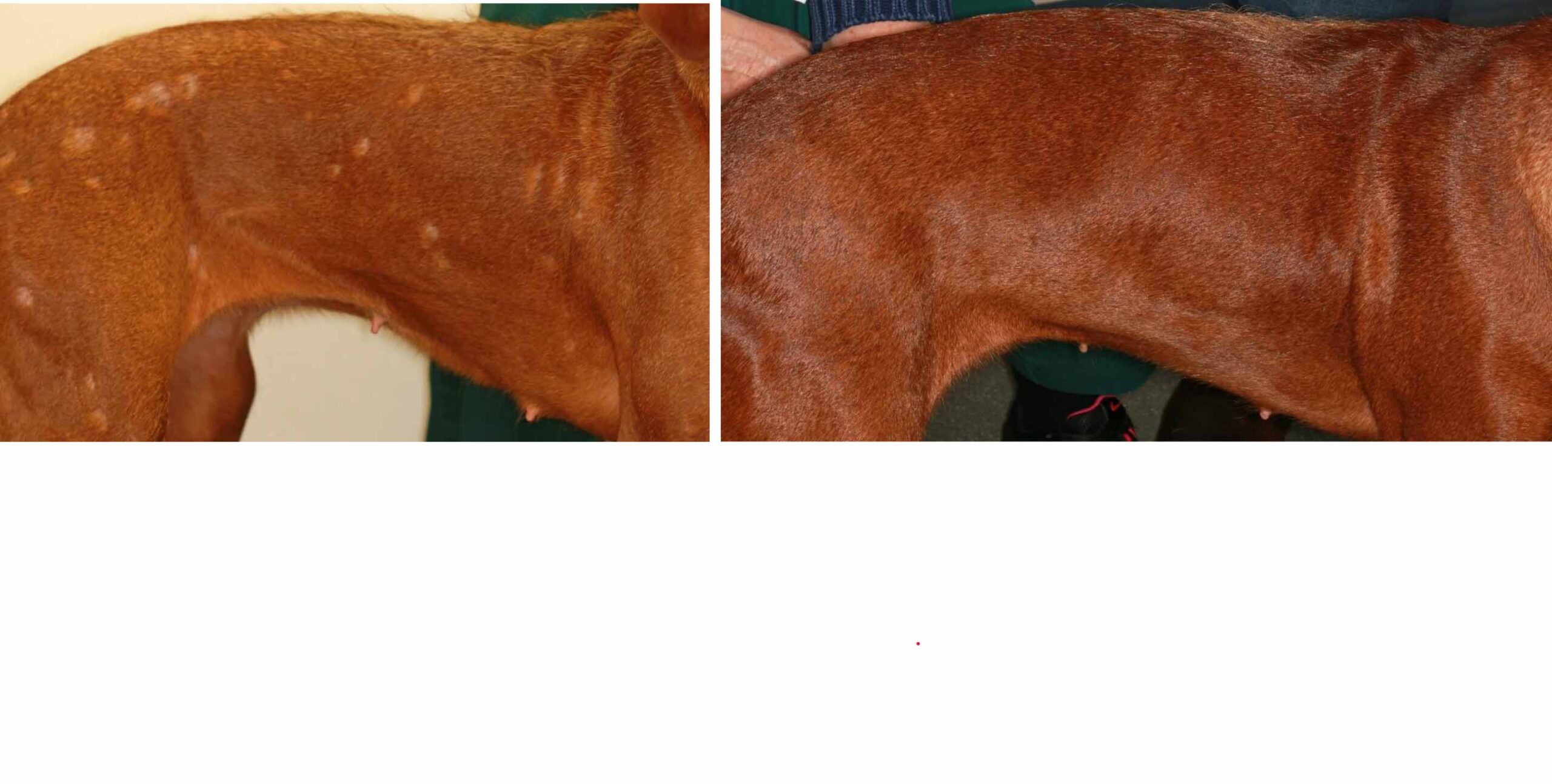 Source: theskinvet.net
Source: theskinvet.net
Aureus tube coagulase positive slide coagulase negative when transmitted by animal bites. Three isolates each of S. Staphylococcus pseudintermedius is considered a major pathogen in dogs typically involved in skin and ear infections urinary tract infections and postoperative infectionsStaphylococcus pseudintermedius is also commonly a part of the normal flora of healthy dogs. What is Staphylococcus Pseudintermedius S. The bacterium Staphylococcus pseudintermedius is carried at certain sites on the bodies of many dogs and cats without causing problems and without resulting in disease.
 Source: 10minus6cosm.tumblr.com
Source: 10minus6cosm.tumblr.com
This study evaluated the in vitro bactericidal efficacy of atmospheric plasma on Staphylococcus pseudinter- medius and Pseudomonas aeruginosa two of the most important bacterial agents isolated from canine pyodermas. Staphylococcus pseudintermedius carriage in the dog is more frequent and genetically heterogeneous compared with that of Staphylococcus aureus in man. Staphylococcus pseudintermedius was implicated as the cause of rapidly progressive and fatal necrotizing fasciitis in a dog. Pseudintermedius is a bacterium commonly found on the skin mouth nose or in the gastrointestinal tract of 50 of dogs and cats. Pseudintermedius can be a member of the oral nasal and skin flora of healthy dogs it is also the leading cause of skin and soft tissue infections in dogs.
 Source: dermazoo.com
Source: dermazoo.com
Staphylococcus pseudintermedius is a common cause of infection in dogs particularly skin infections. It is also one of the leading causes of bacterial skin and soft tissue infections such as pyoderma urinary tract infections and surgical site infections. The aim of this review is to consider systemic therapy options for meticillin-resistant Staphylococcus pseudintermedius MRSP. Staphylococcus pseudintermedius S. It appears that these staphylococcal species have evolved separately through adaptation to their respective natural hosts and differ with regard to various aspects concerning ecology population.
 Source: dermvets.com
Source: dermvets.com
Aureus was isolated from one or more skin sites of 20 of dogs. Staphylococcus pseudintermedius is a colonizer of cats and dogs and may be misidentified as S. It typically causes no problems at all but it can cause opportunistic infections. This is attributed to the fact that the traditional methods used in human. The bacterium Staphylococcus pseudintermedius is carried at certain sites on the bodies of many dogs and cats without causing problems and without resulting in disease.
 Source: dogtime.com
Source: dogtime.com
Staphylococcus pseudintermediusis a pathogenic bacterium of concern within the veterinary sector and is involved in numerous infections in canines including topical infections such as canine pyoderma and otitis externa as well as systemic infections within the urinary respiratory and reproductive tract. It appears that these staphylococcal species have evolved separately through adaptation to their respective natural hosts and differ with regard to various aspects concerning ecology population. As in people MDR bacteria also affect dogs. Infections caused by MRSP in small animals–particularly dogs–have been frustrating veterinarians in recent years. Staphylococcus pseudintermedius is a common cause of infection in dogs particularly skin infections.
 Source: onlinelibrary.wiley.com
Source: onlinelibrary.wiley.com
Among others Staphylococcus pseudintermedius SP and P. Pseudintermedius infection in humans is unknown but is likely underestimated. Pseudintermedius can be a member of the oral nasal and skin flora of healthy dogs it is also the leading cause of skin and soft tissue infections in dogs. Aeruginosa are involved in the vast majority of cutaneous and non-cutaneous resistant infections in companion animals Bergot et al2018. Staphylococcus pseudintermediusis a pathogenic bacterium of concern within the veterinary sector and is involved in numerous infections in canines including topical infections such as canine pyoderma and otitis externa as well as systemic infections within the urinary respiratory and reproductive tract.
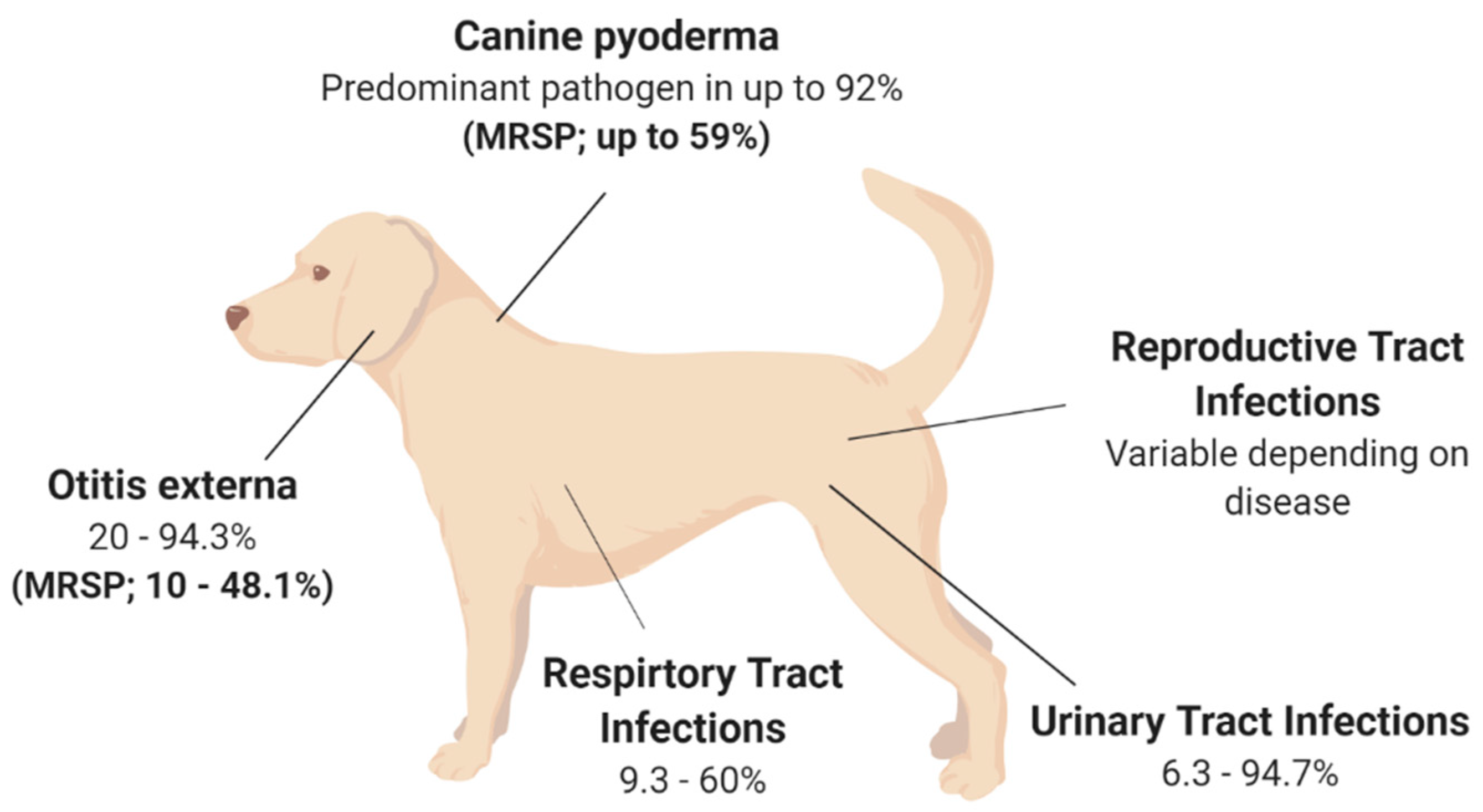 Source: mdpi.com
Source: mdpi.com
Staphylococcus pseudintermedius is considered a major pathogen in dogs typically involved in skin and ear infections urinary tract infections and postoperative infectionsStaphylococcus pseudintermedius is also commonly a part of the normal flora of healthy dogs. Aureus was isolated from one or more skin sites of 20 of dogs. Aeruginosa are involved in the vast majority of cutaneous and non-cutaneous resistant infections in companion animals Bergot et al2018. Pseudintermedius infection in humans is unknown but is likely underestimated. Pseudintermedius has been also detected in humans and more specifically in people in contact with dogs.
 Source: semanticscholar.org
Source: semanticscholar.org
Staphylococcus pseudintermedius is an opportunistic pathogen that has been identified as infectious agent or colonizer mainly in dogs. Staphylococcus pseudintermedius is a common cause of infection in dogs particularly skin infections. Aureus Staphylococcus aureus and S. Staphylococcus pseudintermedius was implicated as the cause of rapidly progressive and fatal necrotizing fasciitis in a dog. It is also one of the leading causes of bacterial skin and soft tissue infections such as pyoderma urinary tract infections and surgical site infections.
 Source: todaysveterinarypractice.com
Source: todaysveterinarypractice.com
Staphylococcus pseudintermedius carriage in the dog is more frequent and genetically heterogeneous compared with that of Staphylococcus aureus in man. What is Staphylococcus Pseudintermedius S. The sites of its most frequent occurrence were nasal skin chin perianal area interdigital area and inner pinna. Pseudintermedius has been observed in higher amounts on dogs that suffer from atopic dermatitis. Aureus Staphylococcus aureus and S.
 Source: 10minus6cosm.tumblr.com
Source: 10minus6cosm.tumblr.com
Aeruginosa obtained from dogs with pyoderma were subjected to atmospheric. The isolate was methicillin-susceptible and did not contain genes encoding the Panton-Valentine leukocidin. Staphylococcus pseudintermedius is the major pathogen isolated from the skin of dogs with pyoderma. It typically causes no problems at all but it can cause opportunistic infections. Aureus Staphylococcus aureus and S.
 Source: cliniciansbrief.com
Source: cliniciansbrief.com
It appears that these staphylococcal species have evolved separately through adaptation to their respective natural hosts and differ with regard to various aspects concerning ecology population structure and. This study evaluated the in vitro bactericidal efficacy of atmospheric plasma on Staphylococcus pseudinter- medius and Pseudomonas aeruginosa two of the most important bacterial agents isolated from canine pyodermas. Staphylococcus pseudintermedius is a colonizer of cats and dogs and may be misidentified as S. It typically causes no problems at all but it can cause opportunistic infections. Staphylococcus pseudintermedius S.
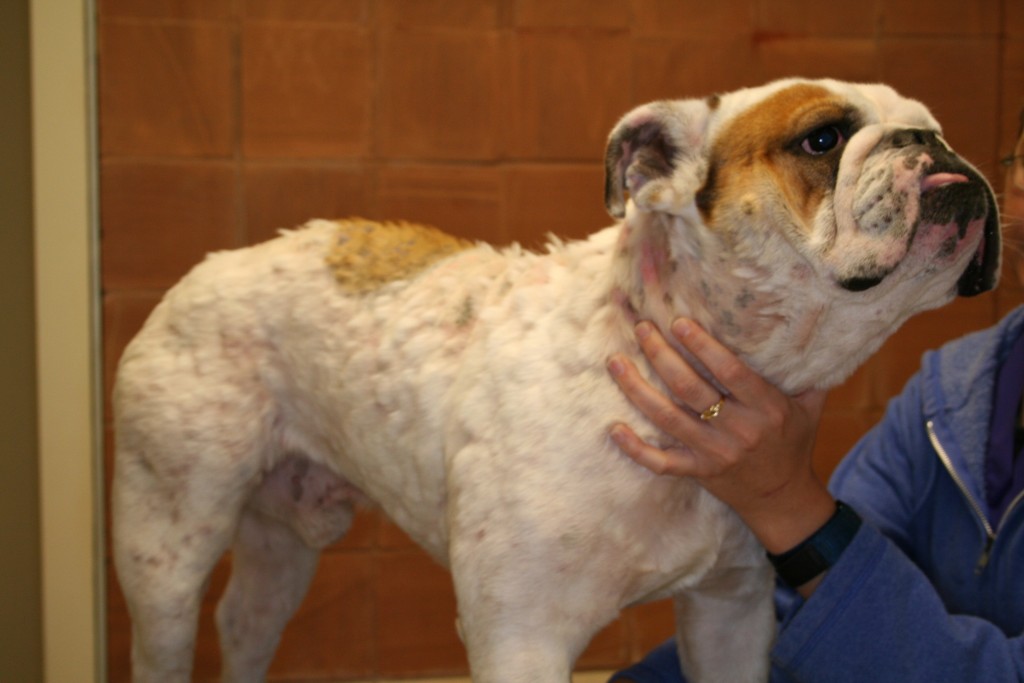 Source: dermvets.com
Source: dermvets.com
Staphylococcus pseudintermedius is a colonizer of cats and dogs and may be misidentified as S. Three isolates each of S. The aim of this review is to consider systemic therapy options for meticillin-resistant Staphylococcus pseudintermedius MRSP. The aetiologic agent of folliculitis in dogs is usually Staphylococcus pseudintermedius a bacterium normally found in the mucocutaneous junctions of the nose mouth and perianal region as well as on the skin of the chin and interdigital spaces. Infections caused by MRSP in small animals–particularly dogs–have been frustrating veterinarians in recent years.
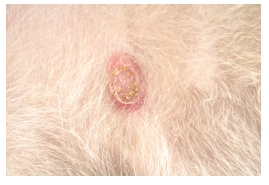 Source: dermvets.com
Source: dermvets.com
In some cases when skin immunity is impaired due to a primary disease this resident bacterium becomes an opportunistic pathogen. This means that if your pet becomes sick or injured S. Aureus is a major cause of livestock infection including mastitis in. Staphylococcus pseudintermedius is a common cause of infection in dogs particularly skin infections. This is attributed to the fact that the traditional methods used in human.
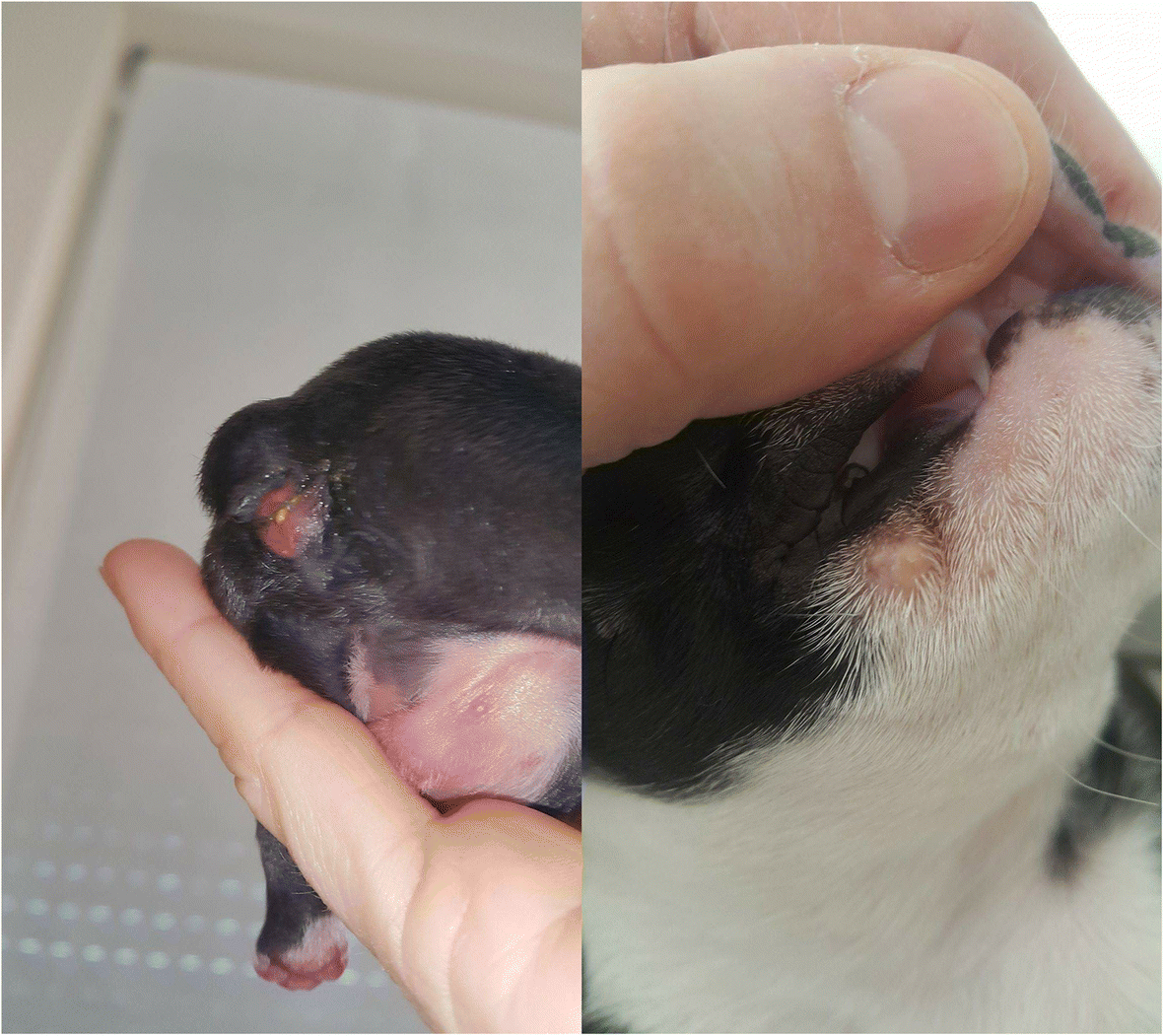 Source: bmcvetres.biomedcentral.com
Source: bmcvetres.biomedcentral.com
Animals with MRSP infections are therefore at risk of transmitting this resistant strain to other animals. Staphylococcus pseudintermedius can be found in the nasal passages of a small but appreciable percentage of healthy people most likely acquired from their dogs. Intermedius Staphylococcus intermedius was first described in 1976 as the main skin pathogen in dogs with characteristics in between S. Aureus is a major cause of livestock infection including mastitis in. The aetiologic agent of folliculitis in dogs is usually Staphylococcus pseudintermedius a bacterium normally found in the mucocutaneous junctions of the nose mouth and perianal region as well as on the skin of the chin and interdigital spaces.
 Source: mdpi.com
Source: mdpi.com
Aureus was isolated from one or more skin sites of 20 of dogs. Pseudintermedius has been also detected in humans and more specifically in people in contact with dogs. After a susceptibility test is performed veterinarians. The isolate was methicillin-susceptible and did not contain genes encoding the Panton-Valentine leukocidin. Staphylococcus pseudintermedius carriage in the dog is more frequent and genetically heterogeneous compared with that of Staphylococcus aureus in man.
This site is an open community for users to do sharing their favorite wallpapers on the internet, all images or pictures in this website are for personal wallpaper use only, it is stricly prohibited to use this wallpaper for commercial purposes, if you are the author and find this image is shared without your permission, please kindly raise a DMCA report to Us.
If you find this site serviceableness, please support us by sharing this posts to your preference social media accounts like Facebook, Instagram and so on or you can also bookmark this blog page with the title staphylococcus pseudintermedius in dogs by using Ctrl + D for devices a laptop with a Windows operating system or Command + D for laptops with an Apple operating system. If you use a smartphone, you can also use the drawer menu of the browser you are using. Whether it’s a Windows, Mac, iOS or Android operating system, you will still be able to bookmark this website.






